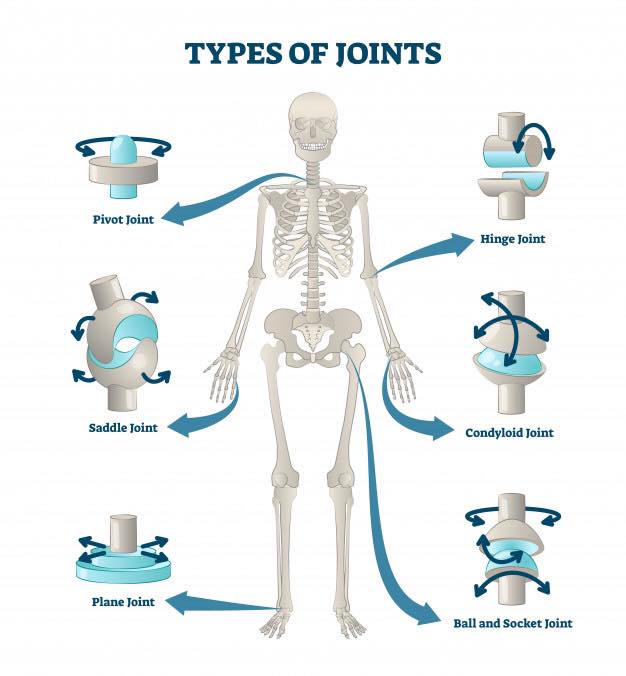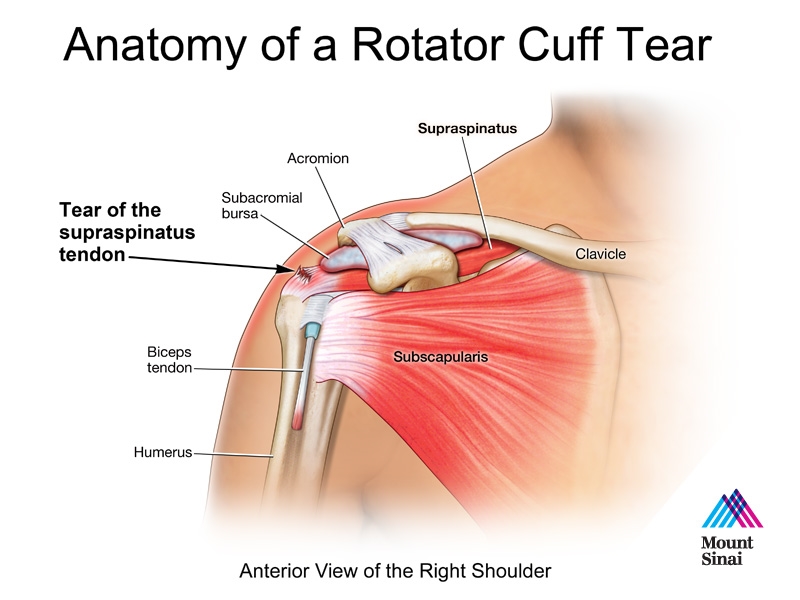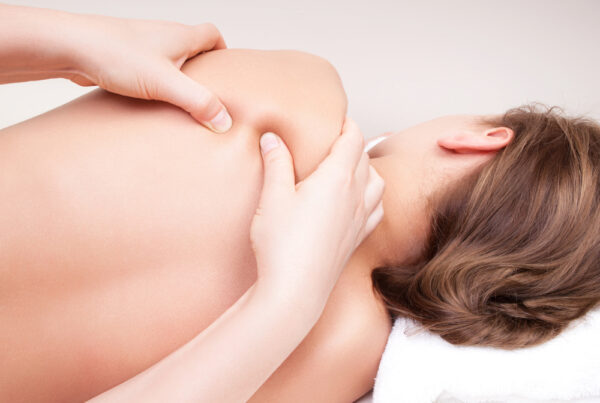Lets talk joints!!
The human body has three main types of joints. They’re categorized by the movement they allow! Synarthroses (immovable) These are fixed or fibrous joints. They’re defined as two or more bones in close contact that have no movement. The bones of the skull are an example. The immovable joints between the plates of the skull are known as sutures. Here’s SIX Types of freely movable joints called diarthrosis (synovial) joints:
Ball and socket joint
Permitting movement in all directions, the ball and socket joint features the rounded head of one bone sitting in the cup of another bone. Examples include your shoulder joint and your hip joint.
Hinge joint
The hinge joint is like a door, opening and closing in one direction, along one plane. Examples include your elbow joint and your knee joint.
Condyloid joint
The condyloid joint allows movement, but no rotation. Examples include your finger joints and your jaw.
Pivot joint
The pivot joint, also called the rotary joint or trochoid joint, is characterized by one bone that can swivel in a ring formed from a second bone. Examples are the joints between your ulna and radius bones that rotate your forearm, and the joint between the first and second vertebrae in your neck.
Gliding joint
The gliding joint is also called the plane join. Although it only permits limited movement, it’s characterized by smooth surfaces that can slip over one another. An example is the joint in your wrist.
Saddle joint
Although the saddle joint does not allow rotation, it does enable movement back and forth and side to side. An example is the joint at the base of your thumb.
Keeping your joints healthy will allow you to run, walk, jump, play sports, and do the other things you like to do. Physical activity, a balanced diet, avoiding injuries, and getting plenty of sleep will help you stay healthy and keep your joints healthy too.
SOURCE https://www.healthline.com/…/how-many-joints-in-human-body






